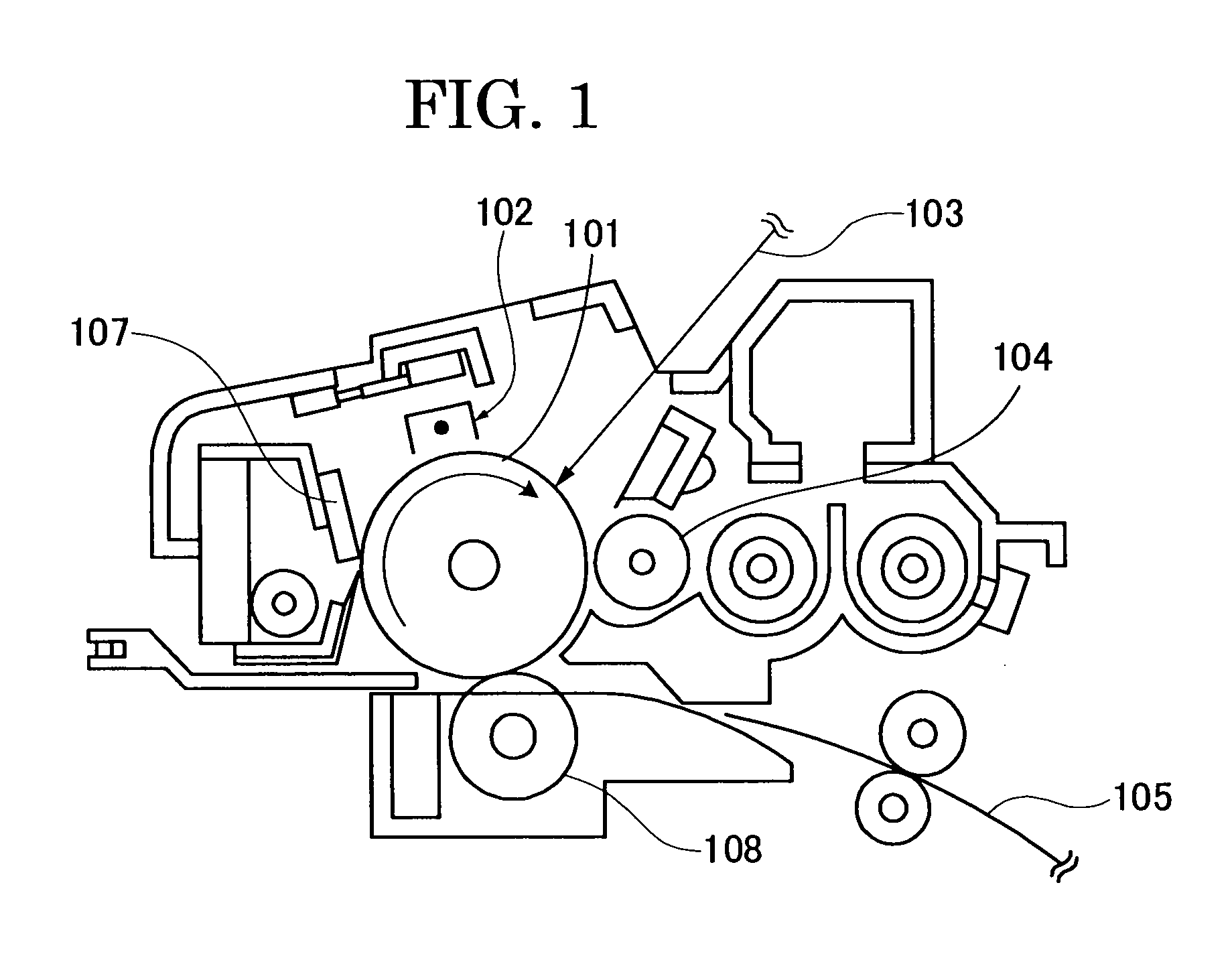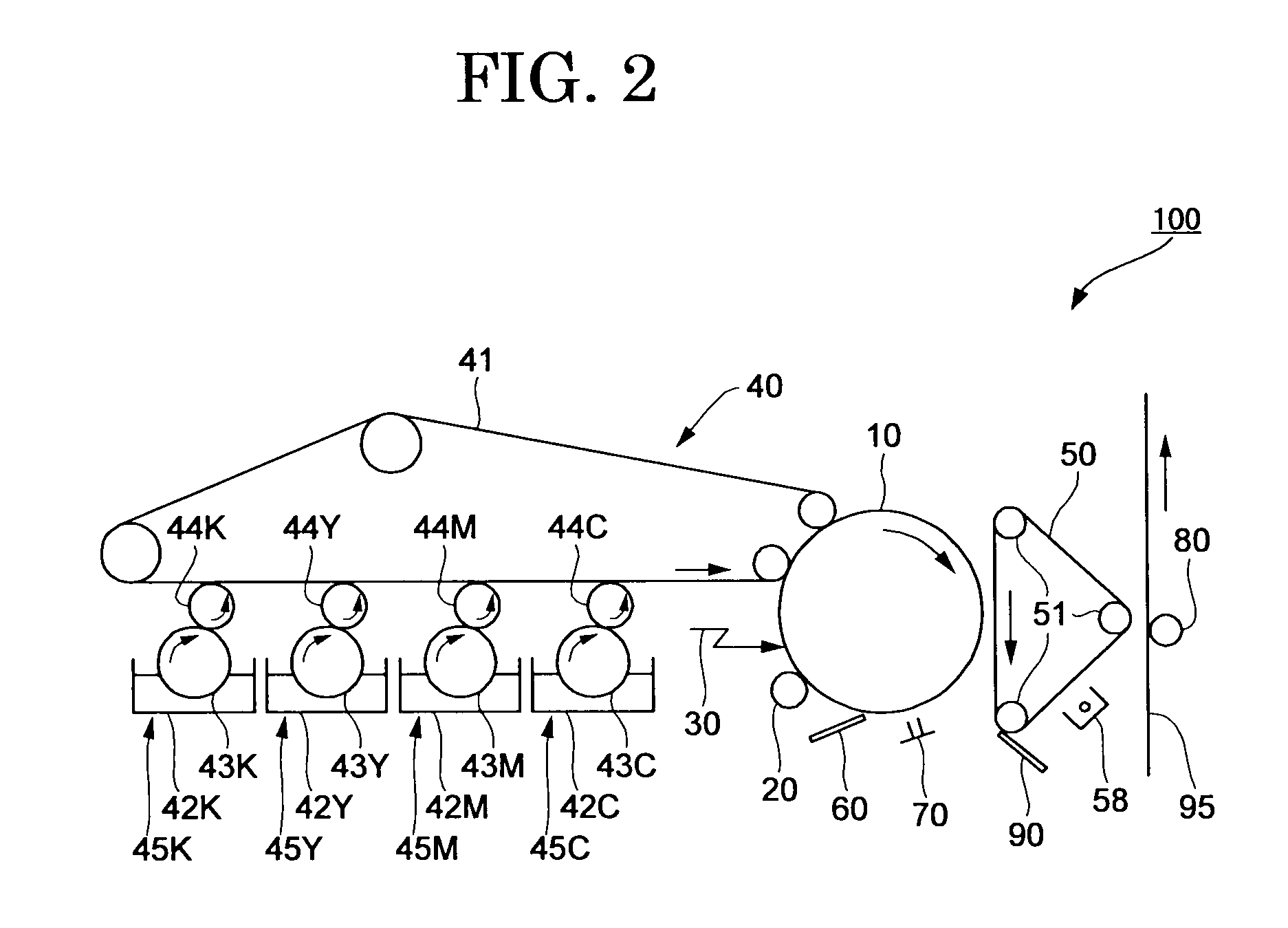Toner, as well as image forming apparatus and image forming method using the same
a technology of image forming apparatus and toner, which is applied in the direction of electrographic processes, electrographic processes using charge patterns, instruments, etc., can solve the problems of reducing the blocking resistance of toner under high temperature and high humidity conditions, large variations between, and poor productivity, and achieve excellent storage stability, low temperature fixing property, and excellent charge stability
- Summary
- Abstract
- Description
- Claims
- Application Information
AI Technical Summary
Benefits of technology
Problems solved by technology
Method used
Image
Examples
synthesis example 1
Purification of Rosin
[0259]Into a 2,000 mL volumetric distilling flask equipped with a distilling tube, a reflux condenser, and a receiver, 1,000 g of a tall rosin was put, and distilled under reduced pressure of 1 kPa to collect a distillate from 195° C. to 250° C. as a main fraction. Hereinafter, a tall rosin subjected to purification is called as an unpurified rosin, and a rosin collected as the main fraction is called as a purified rosin.
[0260]Each rosin (20 g) was pulverized by a coffee mill (National MK-61M) for 5 sec, and 0.5 g of rosin particles that passed through a sieve having a sieve opening size of 1 mm were weighed and put into a bial (20 mL) for head space. From a head space gas sampled, impurities in the purified rosin were analyzed by a head space GC-MS method as follows. The result is shown in Table 1.
A. Head Space Sampler (manufactured by Agilent Co., HP7694)
[0261]Sample temperature: 200° C.[0262]Loop temperature: 200° C.[0263]Transfer line temperature: 200° C.[02...
example 1
Synthesis of Polyester Resin 1
[0284]Into a 5-liter four-neck flask equipped with a nitrogen inlet tube, a dewatering conduit, a stirrer, and a thermocouple, 950 parts by mass of 1,2-propanediol, 2,030 parts by mass of terephthalic acid, and 10.2 parts by mass of tin (II) dioctanoate were added, under a nitrogen atmosphere subjected to a condensation polymerization reaction at 225° C. for 15 hr, and then reacted at 235° C. at 9.0 kPa for one hour. The resultant reaction product was cooled to 170° C., to which 273 parts by mass of purified rosin was added, and the reaction product was reacted with the purified rosin at 200° C. for 15 hr. The resultant reaction product was cooled to 175° C., to which 305 parts by mass of itaconic acid was added, and the reaction product was reacted with the itaconic acid at a rising temperature to 215° C. in two hours and then at 215° C. at 10 kPa. In this way, [polyester resin 1] having a softening point of 105° C. was synthesized.
—Preparation of Poly...
example 2
Production of Toner 2
[0299][Toner 2] was produced in the same manner as in Example 1 except that the following [polyester resin 2] was used in place of the [polyester resin 1].
—Synthesis of Polyester Resin 2—
[0300]Into a 5-liter four-neck flask equipped with a nitrogen inlet tube, a dewatering conduit, a stirrer, and a thermocouple, 900 parts by mass of 1,2-propanediol, 100 parts by mass of 1,3-propanediol, 50 parts by mass of glycerin, 1,850 parts by mass of terephthalic acid, and 12.4 parts by mass of tin (II) dioctanoate were added, under a nitrogen atmosphere subjected to a condensation polymerization reaction at 243° C. for 20 hr, and then reacted at 243° C. at 9.0 kPa for one hour. The resultant reaction product was cooled to 165° C., to which 289 parts by mass of purified rosin was added, and the reaction product was reacted with the purified rosin at 200° C. for 20 hr. The resultant reaction product was cooled to 170° C., to which 320 parts by mass of itaconic acid was added...
PUM
| Property | Measurement | Unit |
|---|---|---|
| softening point | aaaaa | aaaaa |
| softening point | aaaaa | aaaaa |
| BET specific surface area | aaaaa | aaaaa |
Abstract
Description
Claims
Application Information
 Login to View More
Login to View More - R&D
- Intellectual Property
- Life Sciences
- Materials
- Tech Scout
- Unparalleled Data Quality
- Higher Quality Content
- 60% Fewer Hallucinations
Browse by: Latest US Patents, China's latest patents, Technical Efficacy Thesaurus, Application Domain, Technology Topic, Popular Technical Reports.
© 2025 PatSnap. All rights reserved.Legal|Privacy policy|Modern Slavery Act Transparency Statement|Sitemap|About US| Contact US: help@patsnap.com



